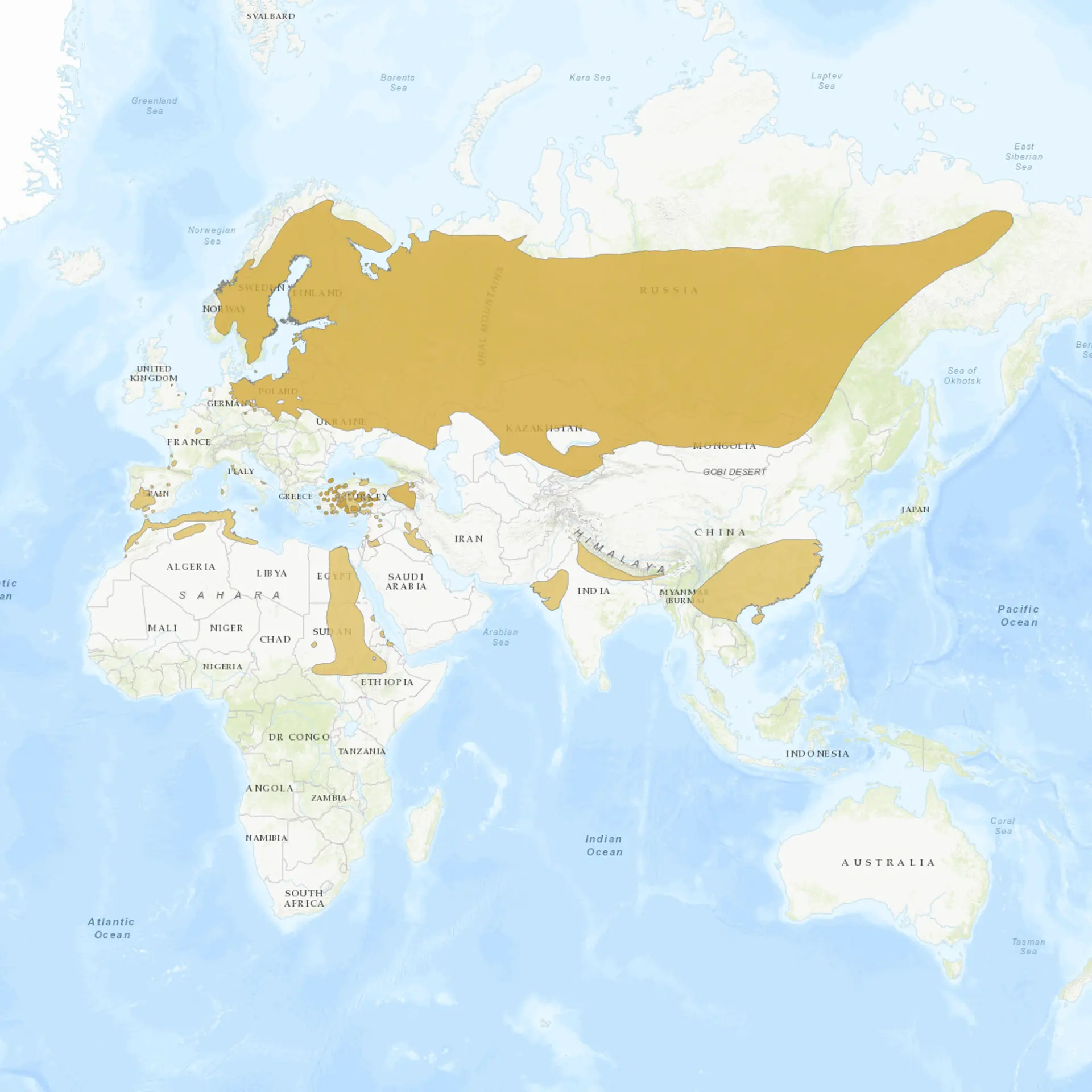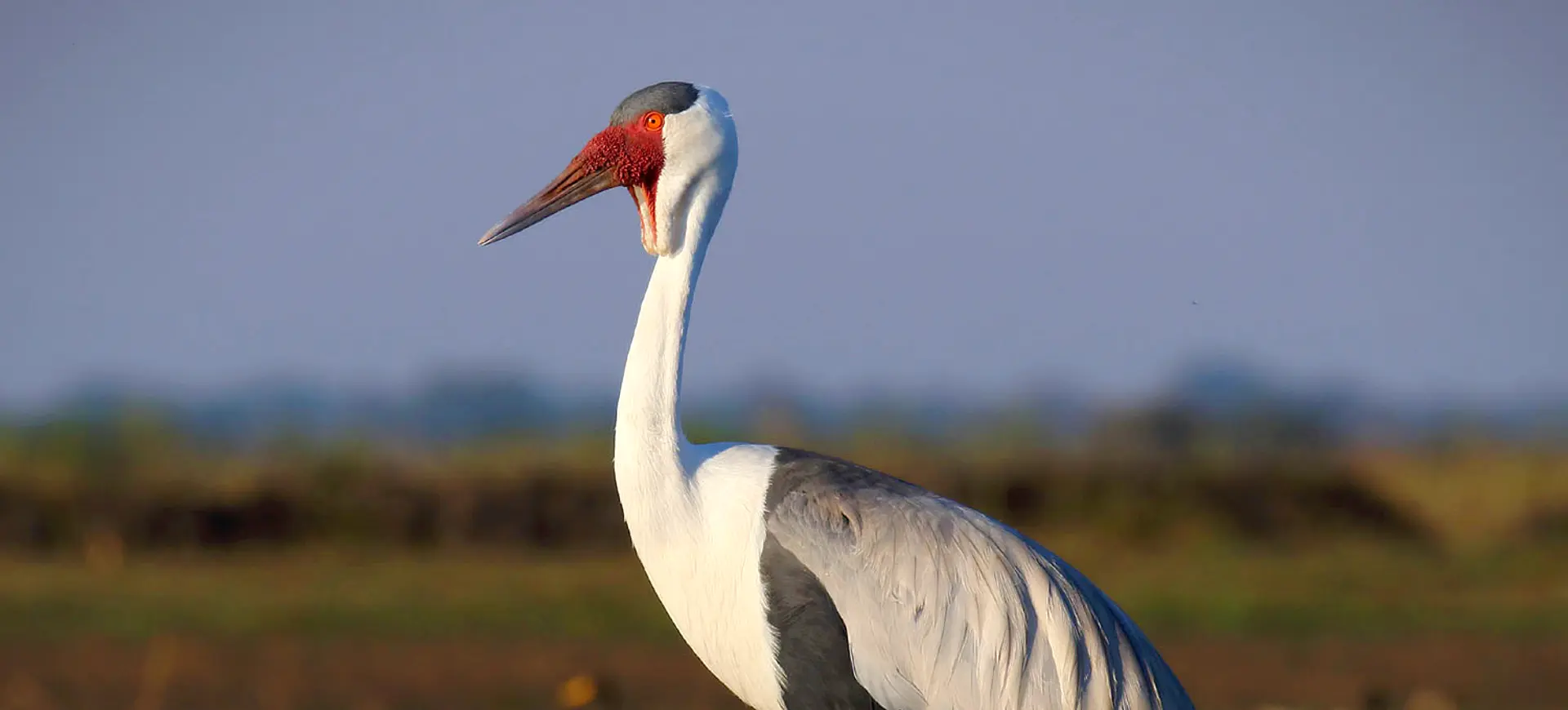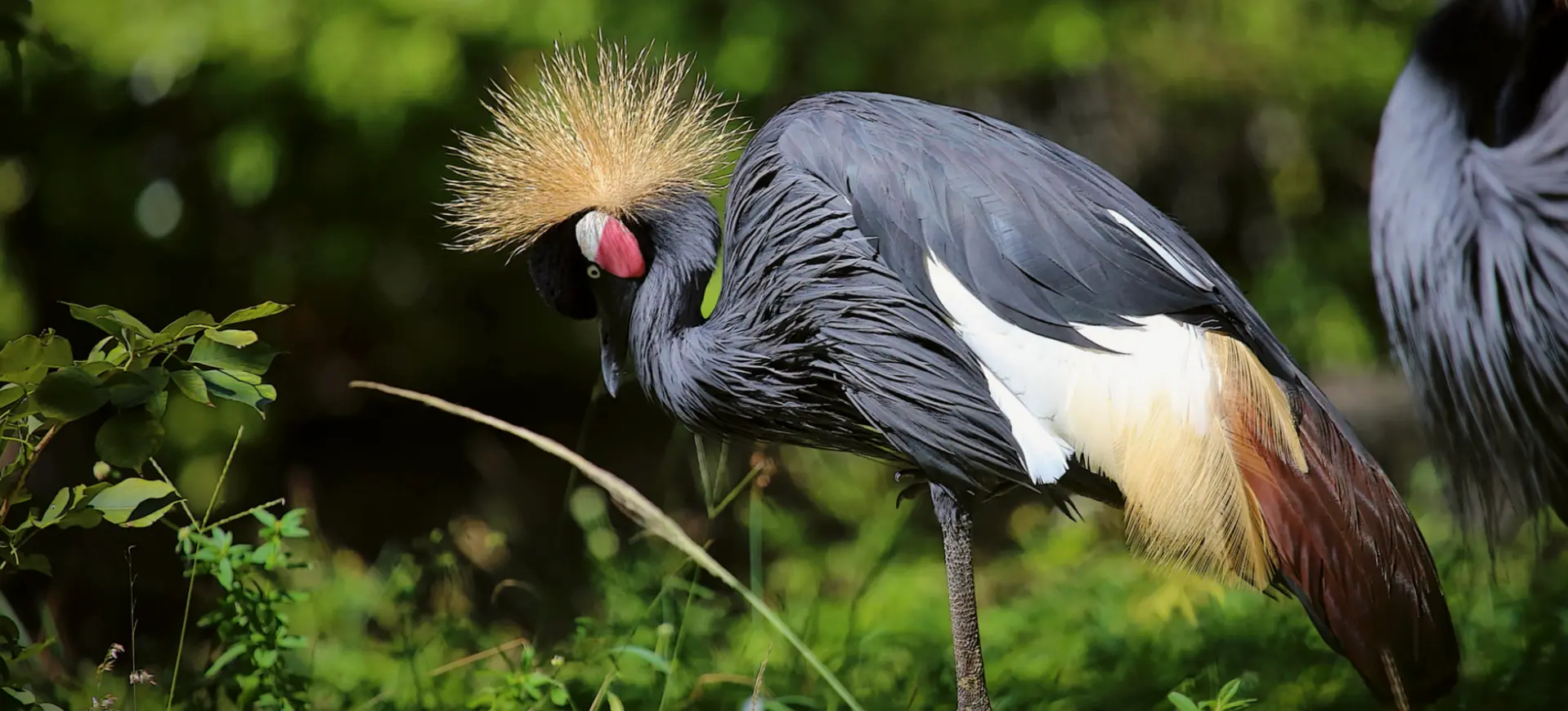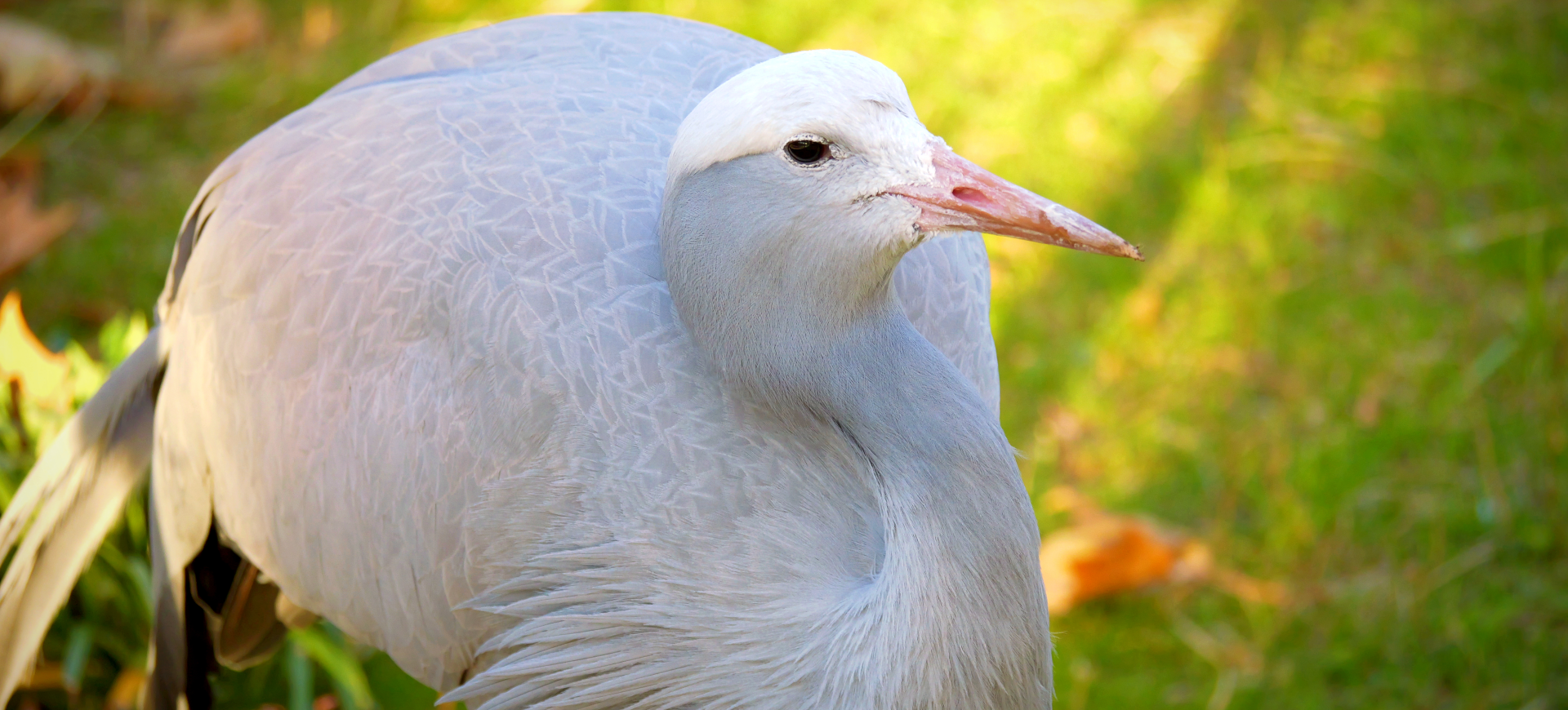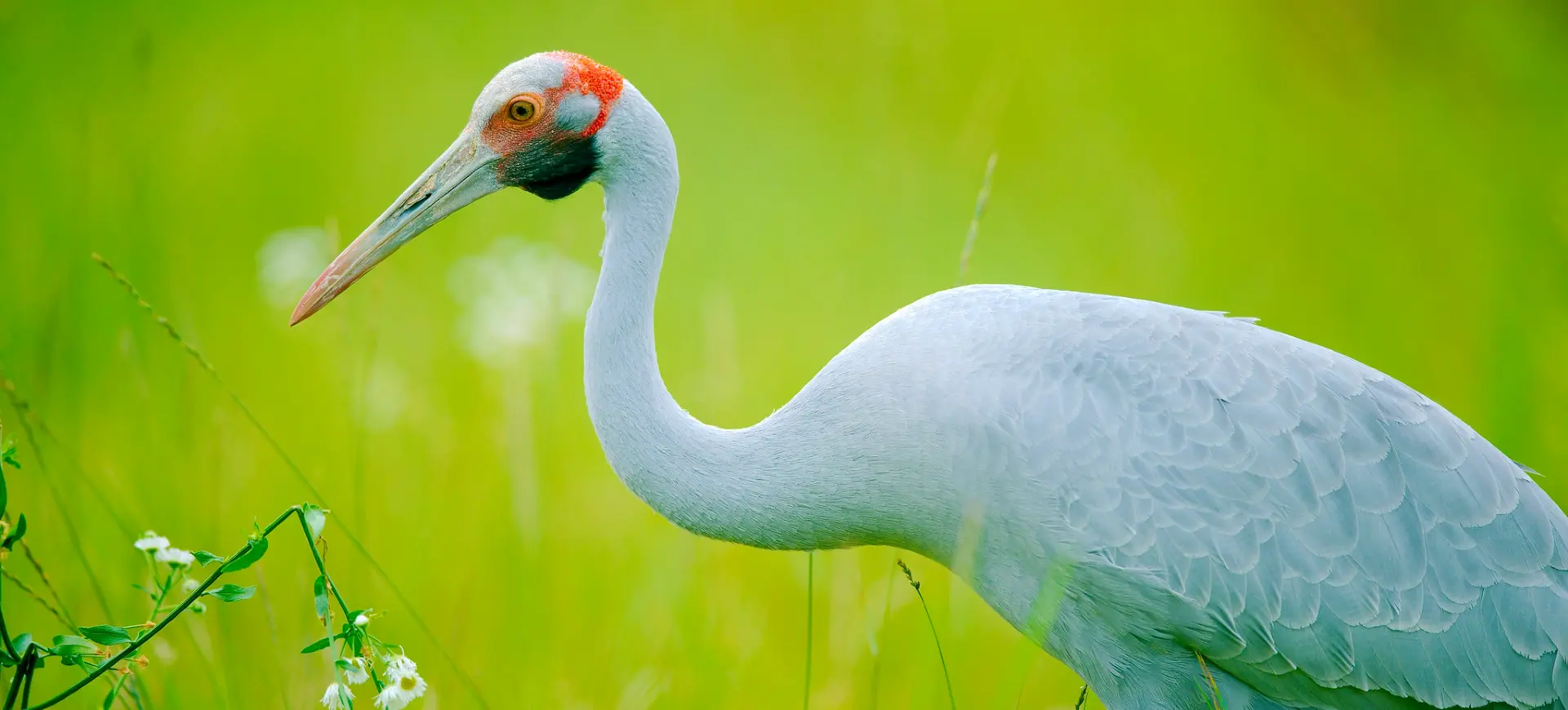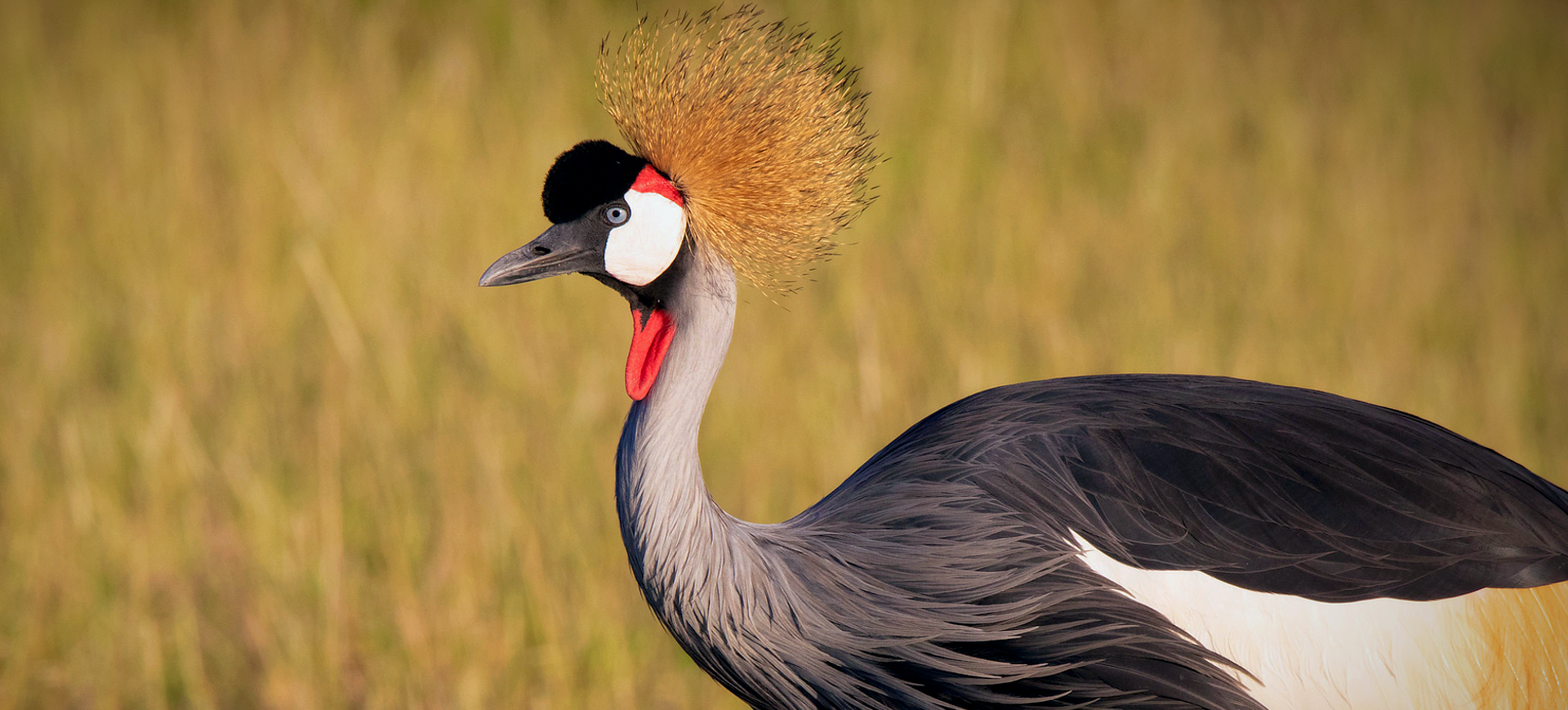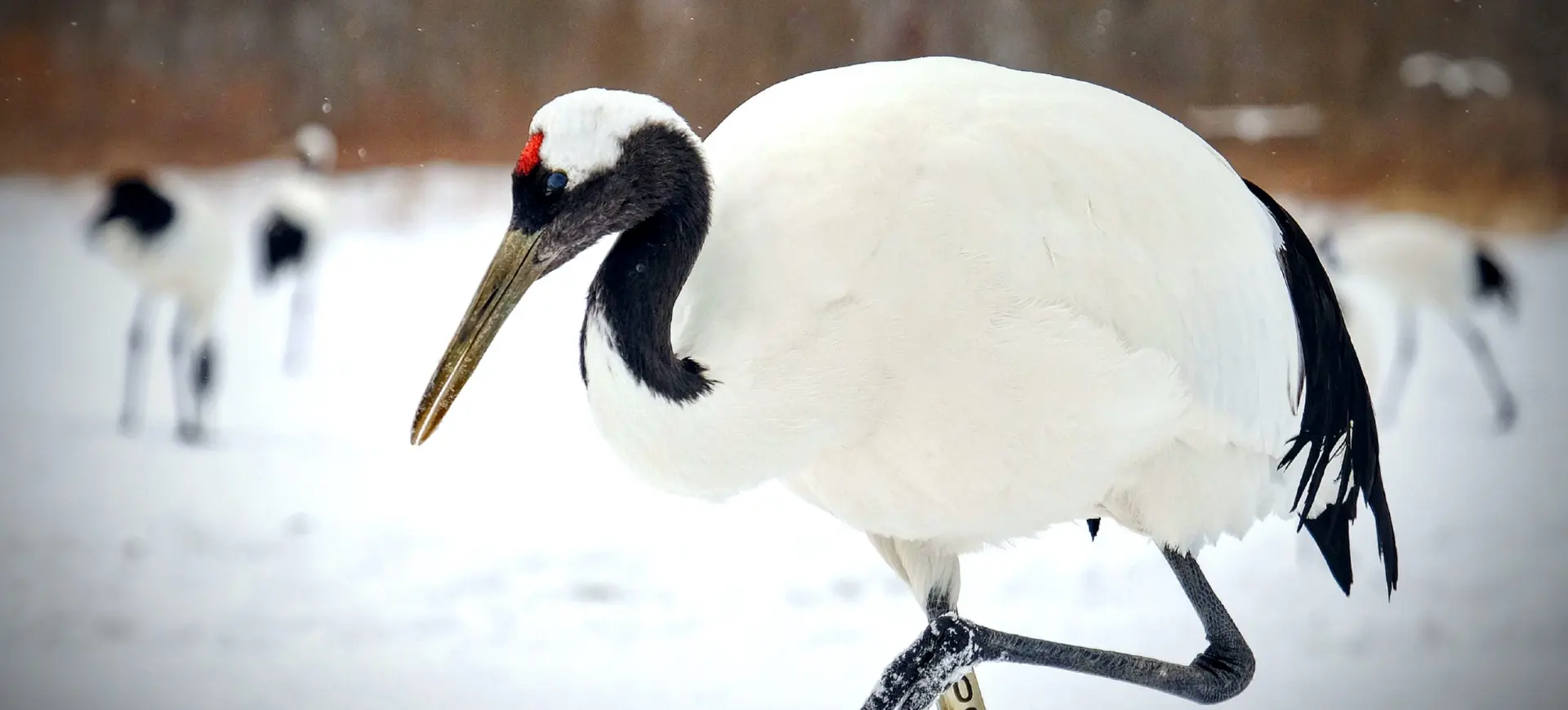Overview
The Common Crane (Grus grus) is a large, majestic bird known for its striking appearance and graceful movements. It is widespread across Europe and Asia, inhabiting a variety of wetlands and grasslands. Common Cranes are notable for their impressive migratory patterns, traveling thousands of miles between their breeding and wintering grounds. They are social birds, often seen in large flocks during migration and in their winter habitats.
Common Cranes prefer wetlands, bogs, and marshes with abundant vegetation during the breeding season. They construct their nests on the ground, usually in isolated, undisturbed areas to avoid predators. Both parents share the responsibilities of building the nest, incubating the eggs, and caring for the young. Outside the breeding season, these cranes gather in large flocks, sometimes numbering in the thousands, in staging and wintering areas.
Common Cranes have a diverse diet that includes plant material, small vertebrates, and invertebrates. They are opportunistic feeders, foraging in wetlands, agricultural fields, and grasslands. Their feeding habits change with the seasons, adapting to food availability in their environment. Conservation efforts for Common Cranes focus on protecting their critical habitats and managing agricultural practices to reduce human-wildlife conflicts.
Current distribution:
Common Cranes are widely distributed, breeding across northern Europe and Asia and wintering in southern Europe, North Africa, and parts of Asia. Their breeding range includes countries such as Sweden, Finland, Russia, and parts of China and Mongolia. During migration, they travel along well-established flyways, stopping at traditional staging areas to rest and refuel.
In winter, they are found in countries like Spain, France, Israel, and India, where they gather in large flocks in wetlands and agricultural fields. Food availability and suitable roosting sites influence their migratory routes and wintering grounds. Protection of these critical habitats along their migration routes is essential for conserving Common Cranes.
Physical Description:
The Common Crane stands about 3.9 to 4.6 feet (120 to 140 cm) tall, with a wingspan ranging from 6 to 7.5 feet (180 to 230 cm). Its plumage is primarily grey, with a distinct black patch on the neck and a white stripe that runs from the eye to the back of the head. The legs are long and black, well-suited for wading through wetlands. Juveniles have a more brownish plumage, gradually becoming grey as they mature.
Adults have a streamlined body and long, broad wings, which facilitate strong, sustained flight during migration. Their bill is long and pointed, ideal for probing the ground for food. The eyes of Common Cranes are bright yellow, providing excellent vision to detect predators and prey. They are known for their loud, trumpeting calls, which are used for communication within flocks and during courtship displays.

Lifespan: Wild: ~25 Years || Captivity: ~40 Years

Weight: Male & Female: 11-13 lbs (5-6 kg)

Length: Male & Female: 139-51 in (100-130 cm)

Height: Male & Female: 47-55 in (120-140 cm)

Wingspan: Male & Female: 71-90 in (180-230 cm)

Top Speed: 30 mph (48 km/h)
Characteristic:
Native Habitat:
The Common Crane inhabits a wide range of wetlands, including marshes, bogs, floodplains, grasslands, and agricultural fields. During the breeding season, they prefer wetlands with abundant vegetation, which provides cover and food resources. These wetlands are often located in remote, undisturbed areas to minimize predation risk. Outside the breeding season, they migrate to lower-altitude regions with milder climates and more abundant food sources.
In their wintering grounds, Common Cranes are often found in agricultural landscapes, where they forage on leftover crops and grains. They require large, open areas for roosting and feeding, with access to water for drinking and bathing. Their habitat needs are diverse, reflecting their migratory lifestyle and adaptability. Conservation of wetland habitats is crucial for maintaining healthy populations of Common Cranes.
Climate Zones:
Biomes:
Biogeographical Realms:
Countries:
Diet:
Diet & Feeding Habits:
Common Cranes are omnivores, consuming a varied diet that includes plant material, insects, and small vertebrates. They feed on roots, tubers, seeds, and aquatic invertebrates in wetlands. During migration and wintering grounds, they often forage in agricultural fields, consuming grains, corn, and other crops. They have also been known to eat small mammals, amphibians, and reptiles when available.
Their foraging behavior involves walking slowly through their habitat, probing the ground with long bills. They are highly adaptable and can change their diet based on seasonal food availability. Common Cranes often feed in large flocks, which can help them locate food more efficiently and provide protection from predators. Their omnivorous diet and flexible feeding strategies are key to their survival across diverse environments.
Mating Behavior:
Mating Description:
Common Cranes are monogamous, forming long-term pair bonds that often last for life. Their courtship displays are elaborate, involving synchronized dancing, trumpeting calls, and complex movements. These displays strengthen the pair’s bond and are important to their mating rituals. Both males and females participate in nest building, using vegetation to construct a wetland mound.
The female typically lays two eggs, and both parents share incubation duties, which last about 28 to 31 days. After hatching, the chicks are precocial and leave the nest within a day, though they remain under parental care for several months. The family unit stays together throughout the breeding season, with the chicks learning essential survival skills from their parents. Fledging occurs around two to three months, but juveniles often stay with their parents until the next breeding season.
Reproduction Season:
Birth Type:
Pregnancy Duration:
Female Name:
Male Name:
Baby Name:
Social Structure Description:
Common Cranes are highly social birds, often seen in pairs or small family groups during breeding. They form large flocks Outside the breeding season, especially during migration and wintering areas. These flocks provide benefits such as increased foraging efficiency and protection from predators. Communication within flocks involves a range of vocalizations and visual displays.
During the breeding season, pairs exhibit strong territorial behavior, defending their nesting sites from other cranes and potential predators. In non-breeding season flocks, social interactions are complex and involve hierarchical structures based on age and experience. Understanding these social dynamics is important for conservation efforts, particularly where human activities impact their natural behaviors. The social nature of Common Cranes plays a crucial role in their survival and reproductive success.
Groups:
Conservation Status:
Population Trend:
The population of Common Cranes is estimated at around 250,000 individuals in the wild, with numbers increasing in recent years. This increase is attributed to successful conservation efforts, habitat protection, and legal protections in many countries. Populations are widespread but concentrated in key breeding and wintering areas. Monitoring and management of these populations are crucial to maintaining their positive trend.
In captivity, about 1,000 individuals are housed in various zoos and conservation centers worldwide. Captive breeding programs support research and conservation initiatives, providing valuable insights into the species’ biology and behavior. These programs also help raise public awareness about the conservation needs of Common Cranes. Efforts to reintroduce captive-bred individuals into the wild continue, contributing to population growth.
Population Threats:
The primary threats to Common Cranes include habitat loss and degradation, particularly in their breeding and staging areas. Wetland drainage, agricultural expansion, and infrastructure development reduce the availability of suitable habitats. Human disturbances like hunting and tourism can also impact their populations. Climate change poses additional risks by altering wetland hydrology and affecting food availability.
Collision with power lines and wind turbines is another significant threat during migration. Pesticides and herbicides in agricultural fields can contaminate their food sources, leading to health problems. Conservation efforts must address these threats through habitat protection, sustainable land-use practices, and effective human activity management. International cooperation is essential given the species’ wide migratory range.
Conservation Efforts:
Various conservation initiatives aim to protect Common Cranes and their habitats. These include establishing protected areas, such as nature reserves and national parks, in key breeding, staging, and wintering regions. International agreements, like the Ramsar Convention, help protect critical wetland habitats. Community-based conservation programs involve local people in protecting crane habitats and promoting sustainable agricultural practices.
Research and monitoring programs provide essential data on crane ecology, migration patterns, and population dynamics. Satellite tracking and field surveys inform conservation strategies and policy decisions. Captive breeding and reintroduction efforts support wild populations and enhance genetic diversity. Education and awareness campaigns are crucial to reducing human disturbances and promoting coexistence with cranes.
Additional Resources:
Fun Facts
- Common Cranes are known for their spectacular courtship dances, which include leaping, bowing, and trumpeting.
- They have one of the longest migratory routes of any crane species, traveling up to 3,100 miles (5,000 km) between breeding and wintering grounds.
- Their loud, trumpeting calls can be heard over long distances and are used for communication within flocks.
- Common Cranes are featured in many cultural traditions and folklore across their range, symbolizing longevity and happiness.
- They are one of the few crane species that breed in both Europe and Asia.
- Both parents raise the chicks, sharing duties like feeding and protection.
- They have a long lifespan, with some individuals living up to 40 years in captivity.
- Common Cranes play an important role in their ecosystems, contributing to seed dispersal and pest control.
- They are adaptable birds, able to exploit a variety of habitats and food sources.
- Conservation efforts for Common Cranes have been successful in many regions, leading to stable or increasing populations.


